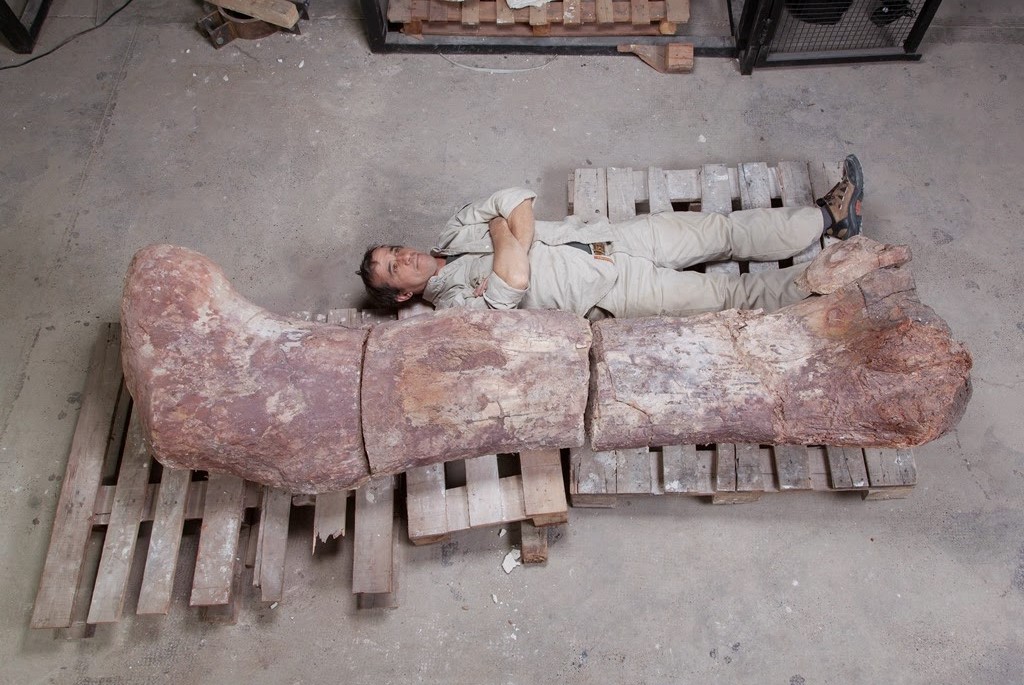
Move over Godzilla, a new dinosaur has made its debut; and this species is the largest at the box office.
The new species of titanosaur was discovered by paleontologists in Patagonia, Argentina. The fossils indicate a creature that stood 65-feet-tall, was more than 130-feet-long, and weighed 77 tons (155,000 pounds), making it thus far the largest on record.
“Given the size of these bones, which surpass any of the previously known giant animals, the new dinosaur is the largest animal known that walked on Earth,” researchers Dr. Jose Luis Carballido and Dr. Diego Pol told the BBC.
The newfound dino had an enormously long neck and tail area, with a rather small skull, and weighed 11 times more than an average 7-ton T-Rex.
“Standing with its neck up, it was about 20m high — equal to a seven-story building.” Carballido said.
“It’s like two semi trucks, one after another, and the equivalent of more than 14 African elephants together in weight. Such dimensions put the focus on the extent to which these animals may have grown. It’s a real paleontological treasure,” he added.
Despite its overwhelming size, the gargantuan titanosaur – an offshoot of the huge, four-footed plant-eaters known as sauropods, to which the Diplodocus and Brachiosaurus belong – is believed to have been a herbivore. It is estimated the titanosaurs roamed the forests of the Cretaceous Period about 95 – 100 million years ago.
The recently unearthed fossils were first spotted by a local farm worker in 2011, but were not fully excavated until this year by a team from the Museum of Paleontology Egidio Feruglio, led by Carballido and Pol. The fossils, numbering 150 in all, form part of the remains of seven different titanosaurs and said to be in “remarkable condition.”
“This is a true paleontological treasure,” Carbailido reiterated in a statement.
The fossils were unearthed not far off from remains of other species, including carnivores. This unusual placement reveals the likelihood that the dinosaurs died in a draught, possibly from dehydration or having gotten stuck in the mud.
The newly discovered species has yet to be named, and Carballido and Pol said that the name they choose will honor not only the record-breaking size of the fossils, but also the farming community that first happened upon the remains.
“It will be named describing its magnificence and in honor to both the region and the farm owners who alerted us about the discovery,” they said.
The find is the second major excavation of titanosaur remains in 2014. In January, a team of Pennsylvania scientists uncovered fossils belonging to the Yongjinglong datangi during an excavation in China.